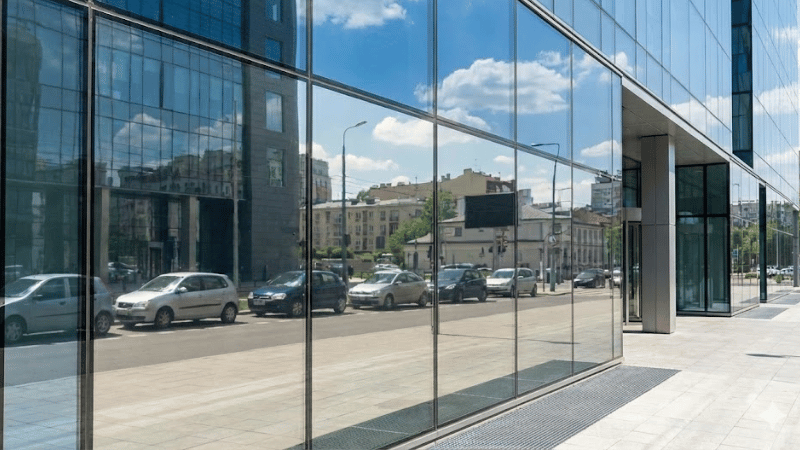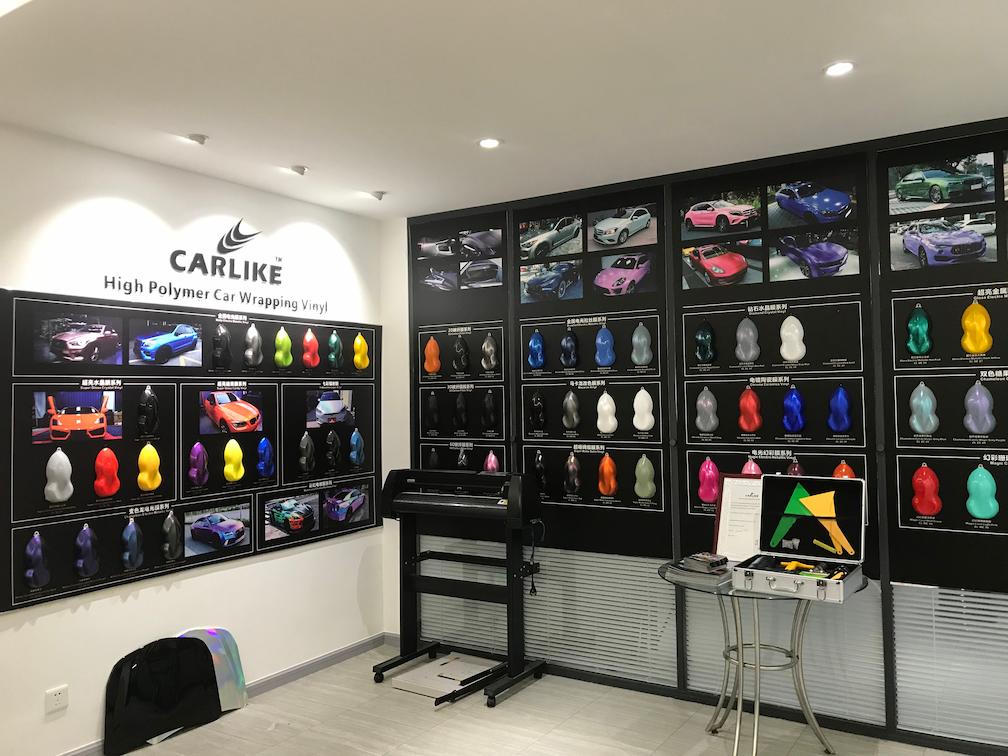Reflective window film promises daytime privacy and cooler interiors, but what happens when night falls? Understanding how mirrored films work is essential before choosing them for your home or office. This guide explains visibility at night, compares reflective, one-way, and dual-reflective films, and shares installation tips and maintenance advice for true 24-hour privacy. Keep reading!
How Mirrored Window Film Works
Reflective window film has a small coating of metal that gives it its mirror appearance. Light is reflected back by this metal coating, which is often made of silver or aluminium.
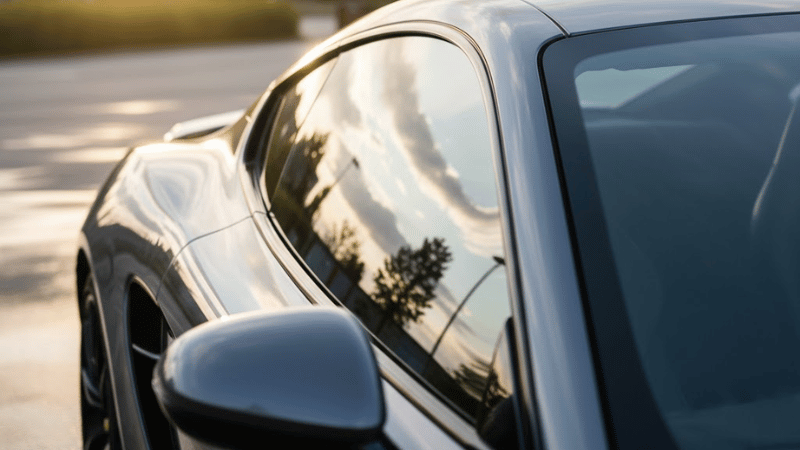
The sun shines strongly during the day. Bright sunlight reflects from the metal covering after striking it.
As a result, there is a mirror effect that prevents visitors from looking inside. This same reflective principle also applies when choosing window tint percentage levels.
For example:
- 5% tint – Very dark (commonly called limo tint), offers maximum daytime privacy
- 20% tint – Dark, still provides strong privacy
- 35% tint – Medium visibility, a balance between privacy and visibility
- 50% tint – Light tint, allows more visibility inside
Your privacy will be improved if the exterior is brighter than the interior. However, the problem here is the fact that this privacy is entirely a matter of which side is illuminated.
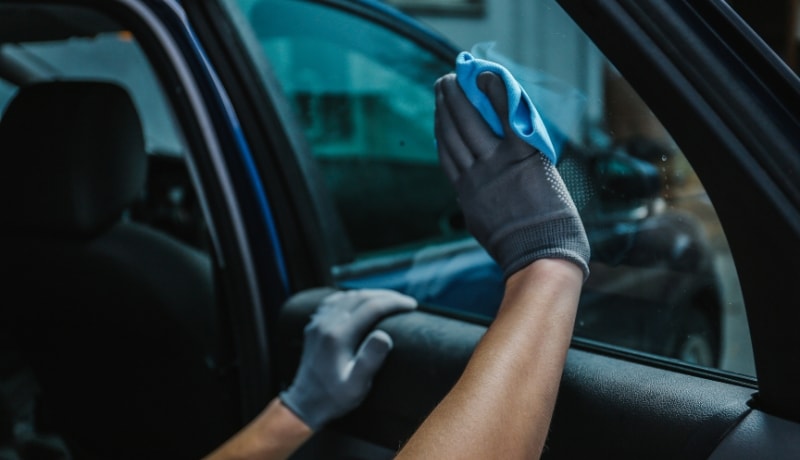
A research in Energies (2023) discovered that putting a reflective window film on clear glass lowered the Solar Heat Gain Coefficient by around 41%.
The film does not build a wall that no one can see through. It merely reflects light back. As the light switches at night, the mirror image switches as well. This leads to the big question that everybody wants to have an answer.
Do You See Through Reflective Window Film at Night?
Yes, at night, people can look through your reflective window film when you have lights on inside the car. The same trick that secures your privacy in the daytime cuts against you at night.
During Nighttime
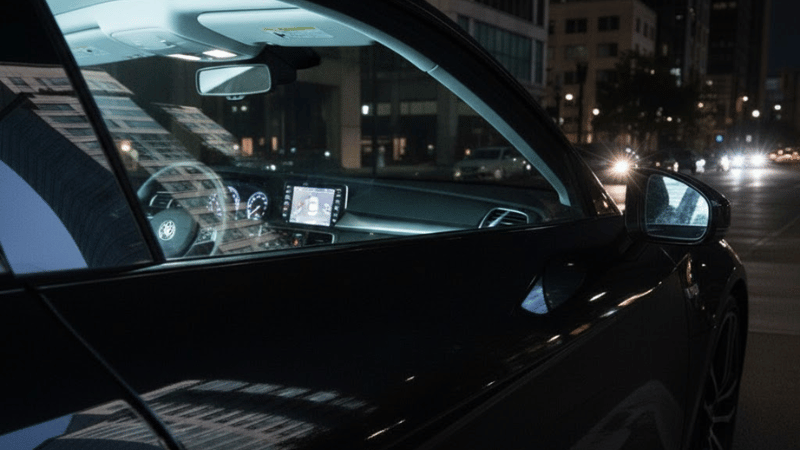
At night, when you switch on the lights in your vehicle, your car interior is lit up. The light that covered you in the day, that reflective coating, now turns your interior light on you. Meanwhile, when one is out in the darkness, one can see clearly.
The blackness of the outside and your indoor lights make the window transparent on the outside. The only way to maintain privacy at night with reflective film is to either switch off your lights or put up curtains or blinds.
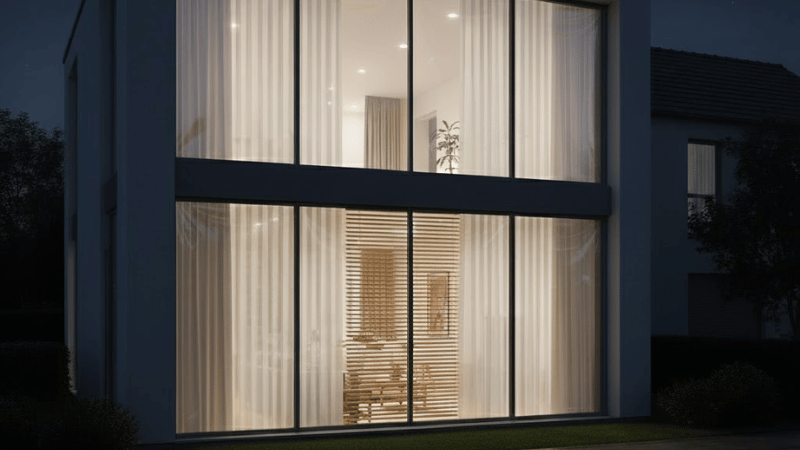
During daylight
During the day, when the light outside is brighter, one-way mirror window film provides privacy, but at night, when the interior lights are on, the image is reversed, and people outside can see the interior.
The U.S. Department of Energy states that reflecting or mirror-type films are more effective at absorbing solar heat than colored, more transparent ones.
Reflective vs. Single vs. Bidirectional Reflective Window Films
We will examine three types of film and their differences. This makes you select the one that fits you.
Reflective Window Film
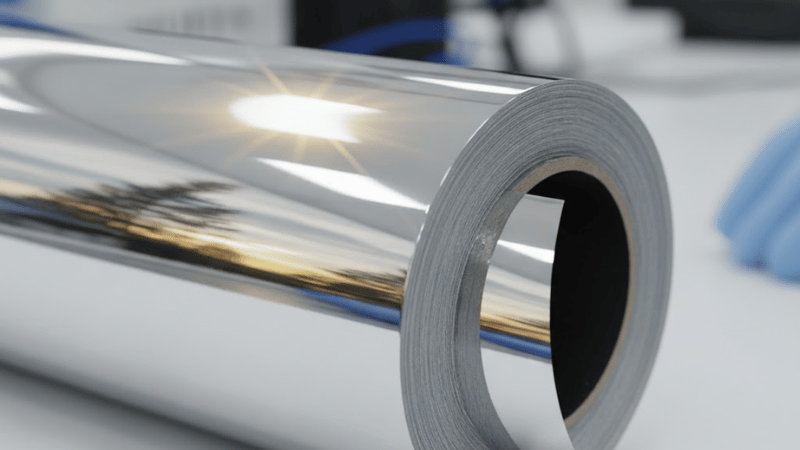
It is one of the most common films. One side of it is coated with metal and this makes it look like a mirror. It is very effective in privacy and heat blockage during the day.
But it does not grant you privacy when you are asleep at night, when your lights are on. Reflective solar films may reject up to 79% of solar energy and prevent almost 99% of UV rays.
One-Way Window Film
It is a film that seems to guarantee privacy at all times, yet it does not. It operates like a normal reflective film. One-way privacy window film is not an independent product for nighttime privacy and requires interior lighting to be low or shut off to be effective after dark.
The name “one-way mirror glass” is confusing. It simply is a refraction depending on the brighter side.
Dual-Reflective Window Film

This film is an upscale version. These films are contrasting on both sides. The exterior is very reflective in terms of daytime privacy as well as heat blockage. The interior is less reflective, such that you do not see yourself in the window as often.
Comparison table of these three types is as follows:
| Feature | Reflective Film | One-Way Mirror Film | Dual-Reflective Film |
|---|---|---|---|
| Daytime Privacy | Excellent | Excellent | Excellent |
| Nighttime Privacy | Poor (lights on) | Poor (lights on) | Poor (lights on) |
| Interior Reflection | High | High | Low to moderate |
| Heat Blocking | Good to excellent | Good to excellent | Excellent |
| View Outside | Slightly darker | Slightly darker | Better than standard |
| Best For | Daytime privacy only | Store windows | High-end homes/offices |
Installation Instructions on Reflective Window Film
You are supposed to install your film properly. Window Film lasts longer and functions more effectively when it is installed well. These are just some tips that are easy to follow.

1. Wipe the glass quite thoroughly first
Any dirt or dust will form bubbles and bumps. Removal of sticking bits can be done with a razor blade scraper. Then wipe the glass using a window cleaner and a lint-free cloth. Wipe it twice to make sure it is flawless.
2. Use soapy water and a squeegee
Add a couple of drops of dish soap and water into a spray bottle to avoid bubbles. Mist a lot of this soapy water on the glass and the sticky side of the film.
This gives you the opportunity to roll the film to have it straight. It also aids the squeegee in forcing out water and air. Begin in the centre and press toward the sides using hard strokes.
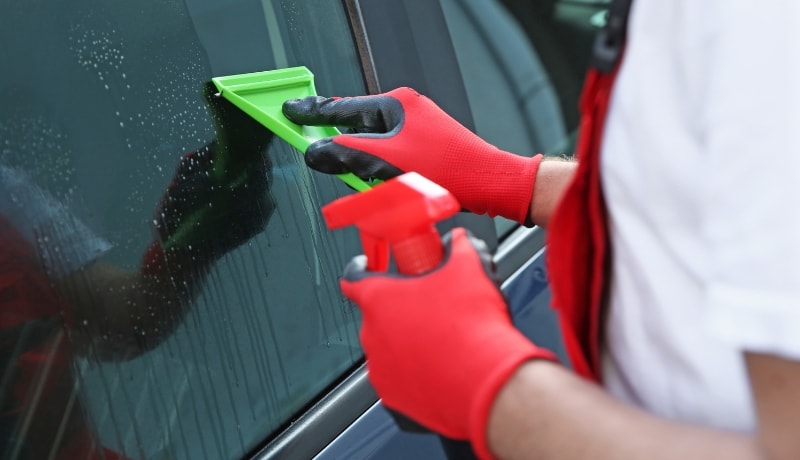
3. Don’t install in direct sunlight.
Problems with the hot glass of the sun. Direct sun damages the glass, and the film will dry too fast, resulting in wrinkles, bubbles, and a lack of adhesion. Choose a rainy day, or get up early in the morning or at night. When the sun is out, close the windows which are not face it.
4. Wait 2-3 days before cleaning.
The film requires this period to be stuck and dry. It takes 2-3 days to cure and stick properly, and in the process, some sort of haziness could be noticed, but it will be gone as the moisture evaporates. It may be rather cloudy or have islets of water.
This is normal. Do not touch or clean the film yet. The haze will automatically disappear.
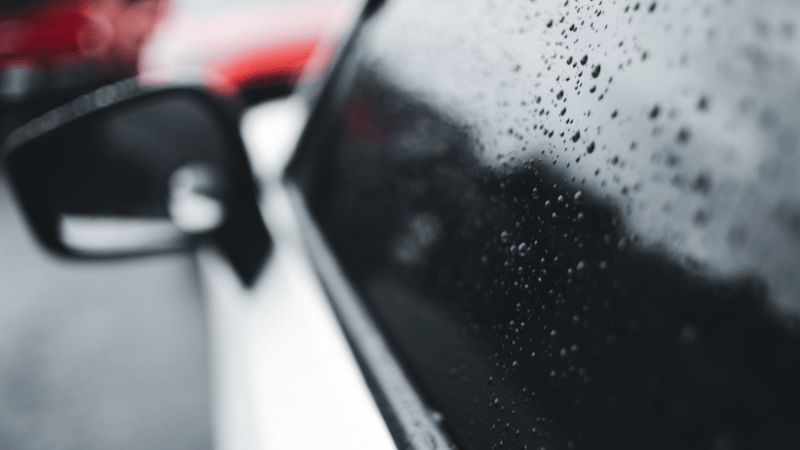
Longevity & Maintenance Advice on Reflective Window Films
Proper maintenance of your film is the only way to ensure that it has a longer life and that it will continue to be useful. Research indicated that the clear glass with heat-absorbing film and reflective film both reduced the indoor temperature and indoor illuminance while increasing indoor comfort.
Average lifespan
Reflective films that are of good quality will have a life of 10-15 years as long as they are well-maintained. This can vary depending on the sun exposure, weather and the quality of the film.
When installed and maintained by professionals, high-quality window films can be expected to last 10-20 years, whereas lower-quality window films can be expected to last between 5-7 years. The length of films on the interior of windows is normally longer than the films on the exterior.

Soft cleanser without ammonia
Ammonia destroys the film’s coating and discolors it. Instead, use mild soap and water. Or purchase cleaners specially designed to clean tinted windows. Spray it on using a sponge or soft cloth. Never use rough scrubbers.
Wipe cloths (soft microfiber) instead of paper towels. Microfiber leaves the dirt unscratched. Towels made of paper may deposit lint and may produce minute scratches in the long run.
Check the edges regularly
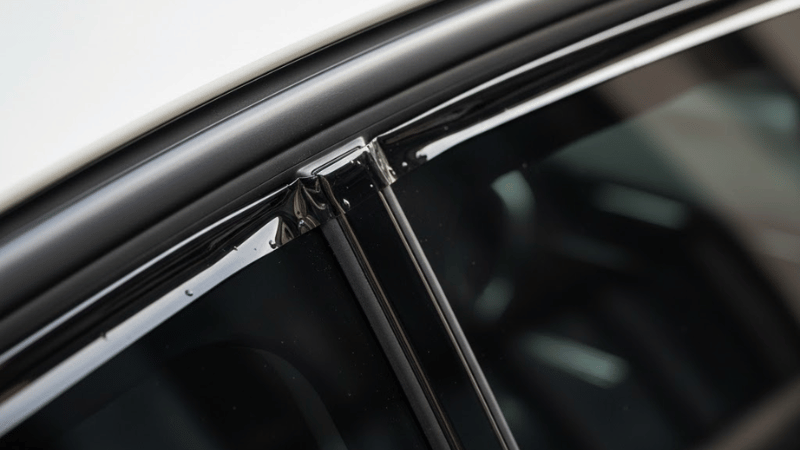
Check to see any lifting or peeling. Edges are the easiest to damage. When you notice lifting, seek the help of a professional before things worsen. It is very easy to fix minor edge issues before they become a problem, compared to changing the entire film coating.
Keep sharp objects away from the film
Scratches on the reflective coating can easily destroy it and allow moisture to enter the window; therefore, cleaning should be done with caution so that one does not scratch the edges of the film.
FAQs
Q1: Does mirrored window film work at night?
No, regular mirrored film does not provide you with any privacy during the night when your indoor lights are on. The mirror image requires the exterior to be lighter than the interior. During the nighttime, when there are lights on, this turns the other way round, and individuals outside can view it clearly.
Q2: What’s the best window film for privacy day and night?
Frosted, matte and decorative films provide you with stable privacy during both the day and night, regardless of the lighting. For flexible privacy, use smart switchable films that can be controlled with a switch. Or with reflective film, combine the curtains or blinds.
Q3: Can I use curtains or blinds with reflective film?
Yes! This is a very successful combination. The reflective film deals with privacy and heat blocking during the day. When your lights are on, the curtains or the blinds provide you with privacy at night.
Q4: Does reflective window film reduce the heat?
Reflective film is indeed very heat-resistant. It absorbs the Sun’s energy before it enters your space. The good films will prevent 50-80 per cent of solar heat. This will reduce cooling costs and create a more comfortable room during hot weather.
Conclusion
Reflective window film provides excellent daytime privacy and heat insulation but loses effectiveness at night when lights are on. For constant privacy, combine it with curtains or blinds, or consider alternatives like frosted film or smart glass.
Choose the solution that best fits your specific day and night requirements.
Turn Your Space into a Masterpiece with Carlike’s Window Film!
We are Carlike, which specializes in the best quality of automotive window tint films and decorative vinyl films. We offer low MOQ, flexible customization, fast shipping, and exceptional 24/7 customer service.
Contact us right now! Get a personalized quotation for your project!

